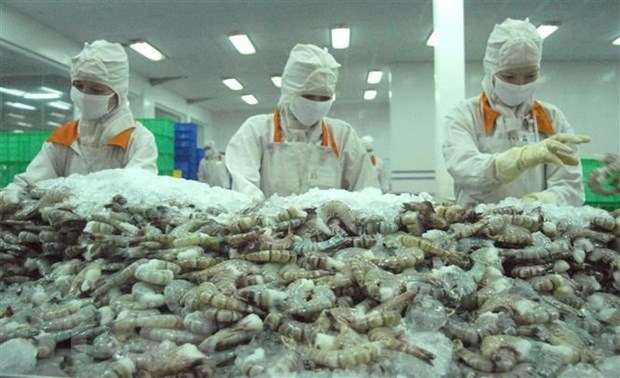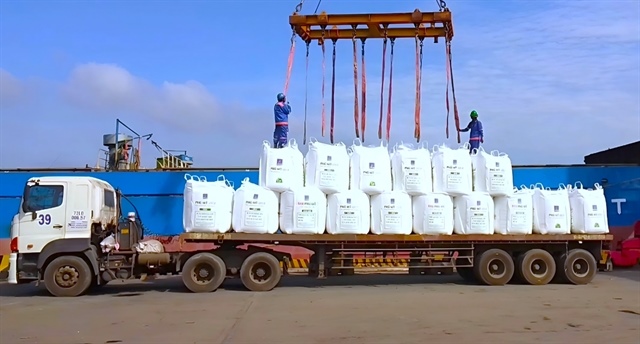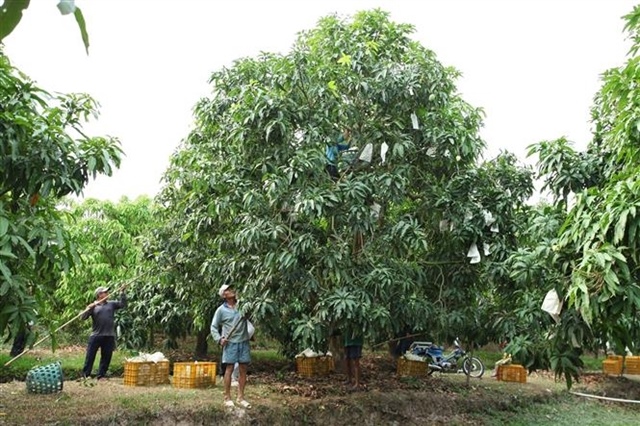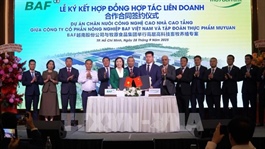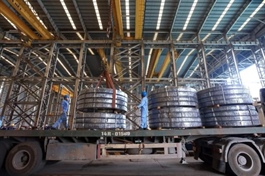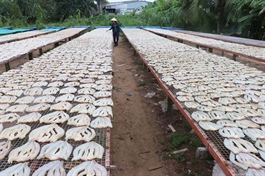Việt Nam brands walk the tightrope in the domestic footwear
Việt Nam brands walk the tightrope in the domestic footwear
With global exports facing increasing barriers in key markets such as the US, EU, South Korea and China, Việt Nam's footwear and apparel industries are shifting focus to the domestic market, a previously underutilised opportunity.
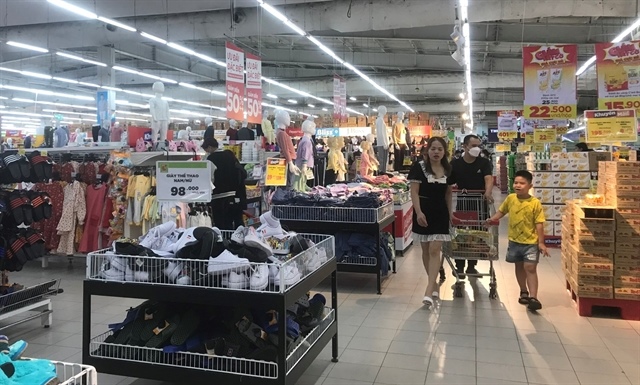
Footwear and garment products at a supermarket in Hà Nội. Home to over 100 million people, local consumers offer a promising alternative for the leather, footwear, garment and textile sectors. —Photo chinhphu.vn |
As trade walls rise in the US, EU, South Korea and China, Việt Nam’s footwear and apparel industries are lacing up for a new race — winning over domestic shoppers. With a home market of more than 100 million consumers, the opportunity is too big to ignore.
According to director of the Department of Domestic Market Management and Development under the Ministry of Industry and Trade (MoIT) Trần Hữu Linh, the domestic market for garments, textiles, footwear and leather goods is projected to reach US$6–6.5 billion in 2025. Clothing makes up about $5 billion, while shoes and handbags contribute $1.1–1.2 billion.
Yet the competition is fierce, with Vietnamese enterprises and foreign brands splitting market share almost evenly. While this underlines the challenges ahead, it also points to huge growth potential for local firms ready to match changing consumer demands.
Linh noted that major export-led economies have long balanced overseas sales with domestic consumption — and Việt Nam must now follow that path.
Despite the domestic potential, local companies face steep competition, especially from low-cost imported products, many of which dominate online shopping platforms.
Deputy General Secretary of the Vietnam Textile and Apparel Association (VITAS) Nguyễn Thị Tuyết Mai pointed out that although many Vietnamese brands are striving to establish themselves, expanding their domestic market share has remained difficult.
To address this, VITAS and the Vietnam Leather, Footwear and Handbag Association (LEFASO) have teamed up with the Ministry of Industry and Trade to initiate trade promotion programmes. These include expanding e-commerce channels and promoting the 'Vietnamese people prioritise using Vietnamese goods' campaign, helping bring locally made products closer to consumers.
Corporation 28’s Deputy Head of R&D Nguyễn Thị Hồng Trang noted that although the company has carved out a niche in the high-end men’s fashion market with its Belluni brand, consumer behaviour has changed post-pandemic.
Customers now prefer affordable options – typically priced under VNĐ300,000 – and are shopping more online.
To stay competitive, brands are forced to offer frequent discounts, which, if overused, can erode their mid-range positioning and dilute brand identity.
There is a growing middle class, and demand for quality products is rising, Trang said. But Vietnamese companies are still struggling to find a solid foothold in their own backyard.
Another pressing issue is the proliferation of counterfeit and fake goods, which undermines legitimate businesses. A representative from Biti’s Vietnam revealed that since 2010, some distributors have been importing counterfeit products, forcing the company to protect its brand by establishing its own retail network.
Biti’s has opened 200 branded stores nationwide and now earns 70 per cent of its revenue from domestic sales — a testament to the importance of brand control in a fiercely competitive environment.
Industry experts argue that deeper challenges lie in the structure of the supply chain.
Deputy Director of the Domestic Market Department Phan Văn Chinh pointed out that the localisation rate in the textile and footwear sectors remains low – only 40–50 per cent. The majority of raw materials are imported, primarily from China and South Korea.
Because export clients often require specific imported materials, local manufacturers lack the incentive to develop domestic sources. This dependency weakens the industry's ability to form an autonomous supply chain, reducing competitiveness both at home and abroad.
LEFASO Vice Chairwoman and General Secretary Phan Thị Thanh Xuân added that tariff policies also place Vietnamese manufacturers at a disadvantage. Under the ASEAN-China Free Trade Agreement, the import tax on finished shoes from China is zero. In contrast, importing raw materials can incur tariffs of 5–10 per cent. Combined with local labour and operational costs, these factors make it nearly impossible for Vietnamese products to compete on price.
Therefore, LEFASO is working with the MoIT to launch a roadmap for domestic brand development from 2026 to 2030. The initial goal is to build five strong Vietnamese brands in the first year and increase the number to 10 in the following year, eventually creating a competitive, high-quality brand ecosystem that serves both domestic and international markets.
To truly tap into the domestic market and be export-ready, Vietnamese businesses must take control of their raw materials, Xuân said. If the companies continue to rely on imports, they risk losing both internationally and locally.
- 09:33 29/09/2025


